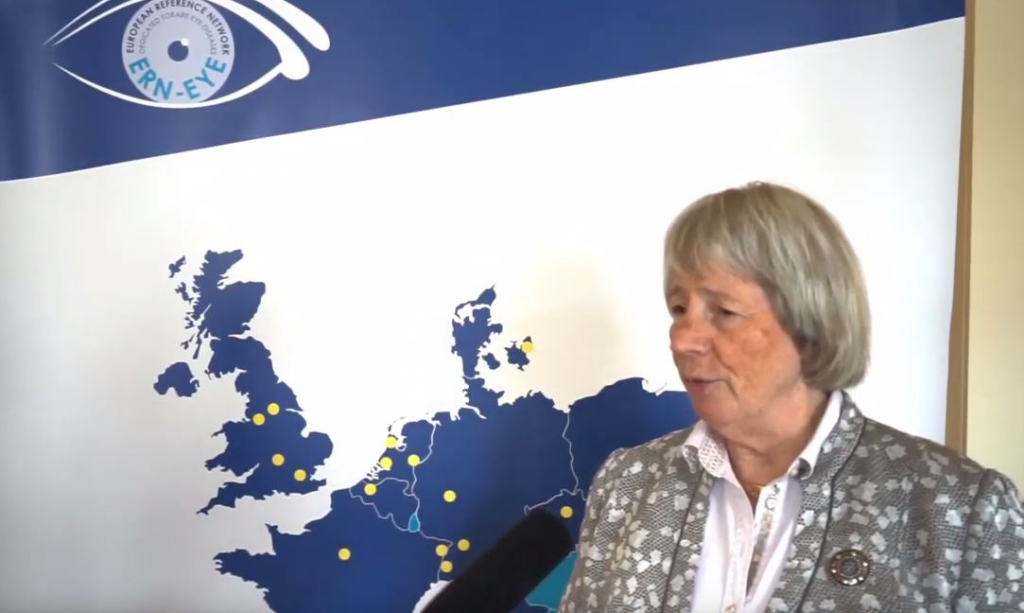Every month, ERN-EYE invites you to meet an active person within the network through a short interview. This month, it’s Christina Fasser, ePAG representative and President of Retina International, who accepted to answer our questions.
“I think one of the best advances is that the community of ophthalmologists, scientists and geneticists in the rare eye diseases area in Europe worked together and started to work on projects also outside of the ERN and it now build up a community.”

My name is Christina Fasser, I’m the president of Retina International
What is your concrete role in the ERN-EYE Network?
I’m a so called ePAG that means a patient advocate within the network. Our role is to make sure that the questions and the things are patient centered that when we see that something is too far away for the patient or unrealistic that we come into you and intervene and give advice.
In your opinion what is the most important issue ERN-EYE could overcome?
The most important objectives of the ERN-EYE is to have health provider, health centers that are knowledgeable, that are able to diagnose and wherever to treat rare eye diseases to reduce the patient journey.
That means that it doesn’t need many years to get to the diagnosis, to get it quickly and to get it to the best of the state of art, to make sure that there is also genetic diagnosis included and genetic counseling.
What are the main challenges of the network?
The main challenge is that first, the network grows together and can reach out to the patients, the HCP’s need to be included in the ERN and that it is clear that the ERN is part of their day-to-day work and so that comes to the final real challenge of the ERN-EYE that at the moment it depends very much on the volunteer ideas of the HCP’s to participate and to help to let it happen and for this we have to make sure that these ERNs will be sustainable and we last longer than the initial five years they have been grounded minimal support and we do hope that we get more grants issued which are dedicated to the rare eye diseases and especially to the ERNs.
What are the best advances?
I think one of the best advances very quickly is that the community of ophthalmologists and scientists and geneticists in the rare eye disease area in Europe worked together and started to work on projects also outside of the ERN and it now build up a community and on the other hand I think that it’s CPMs, the virtual clinic where you can put up critical cases and then a panel of specialists throughout Europe will discuss it, I think that’s for the patient a very important step forward.
To conclude, in your dreams what would ERN-EYE look like in ten years?
In ten years, the ERN-EYE should be covering whole Europe also those countries where at the moment there is no member of the ERN-EYE and that the ERN-EYE has the means to continue to work and of course I hope that for many more diseases in ten years there will be treatments available and accessible to all European citizens.

